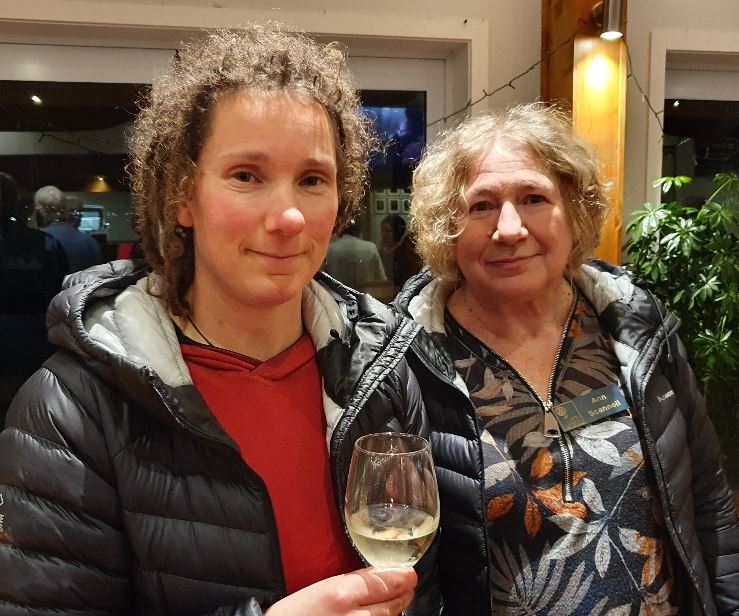 Bex Jackson is the daughter of club member Ann Scannell, and a field worker with DoC in Te Anau, where she has lived for some time. She has Bachelor’s and Master’s degrees in zoology and conservation.
Bex Jackson is the daughter of club member Ann Scannell, and a field worker with DoC in Te Anau, where she has lived for some time. She has Bachelor’s and Master’s degrees in zoology and conservation.
Among other things, Bex is involved with a project studying New Zealand’s native bats. She gave us a well-illustrated account of the work, which is centred on Eglinton, in Fjordland.
In New Zealand, bats are geographically widespread but rather rare, and inconspicuous. There are two species, long and short tailed, and their behaviour is quite different.
The long-tailed bat is more common, it lives in small colonies, weighs 10 grams, and moves around a lot. It can live in urban areas and can be seen at dusk in Hamilton. It catches insects on the wing.
The short-tailed bat is heavier at 15 grams, it lives in large colonies, and can occupy the same roost for weeks at a time. This one, unusually, can walk about on the forest floor to catch insects as well as catching them in flight.
Both types can live for as long as 15 or 20 years.
Colonies of bats can be found by analysing recordings of kiwis in the wild; as well as the ultrasonic echolocation noises they make, they also squeak rather like mice.
Bats are under threat, from habitat loss and predation by rats, stoats, and moreporks.
In the Eglinton study, RFID chips weighing about one gram are attached to the bats and their movements are monitored. The primary aim is to check female survival rates, which are key to population survival. In the last 15 years over 3500 bats have been tagged, and the colony is doing well.
Bex reminded us that bats are protected, and our NZ species don’t have diseases that humans can catch.
Bex also thinks that bats are not ugly, although not all of her audience agreed.
